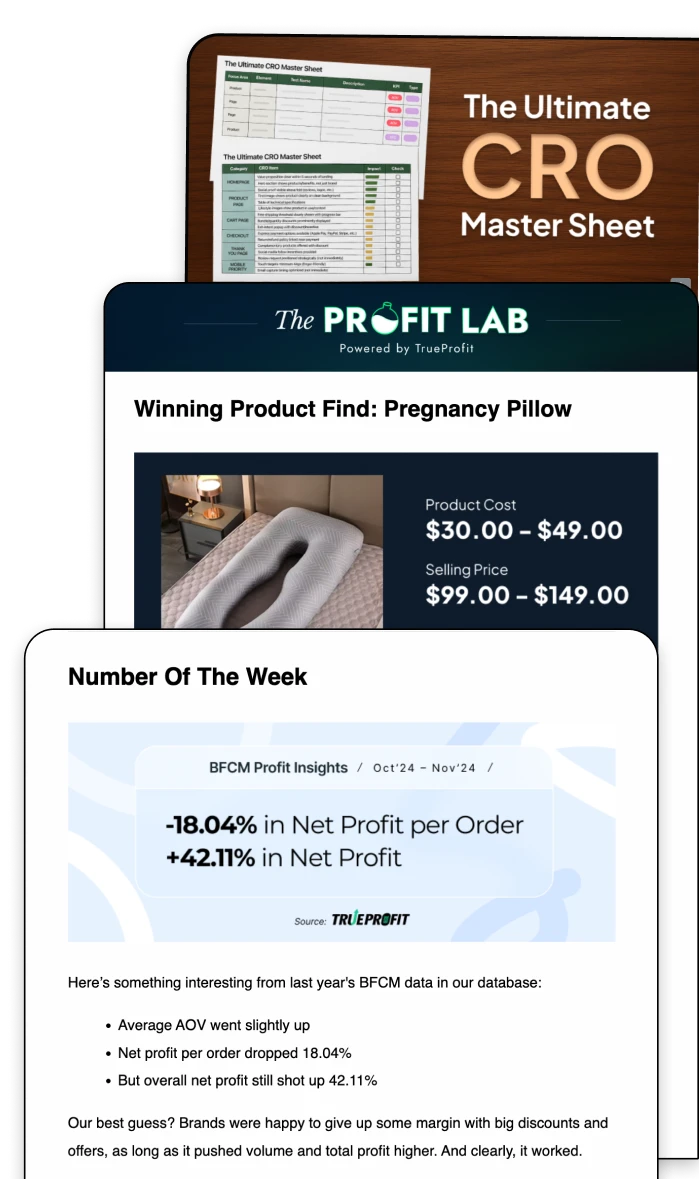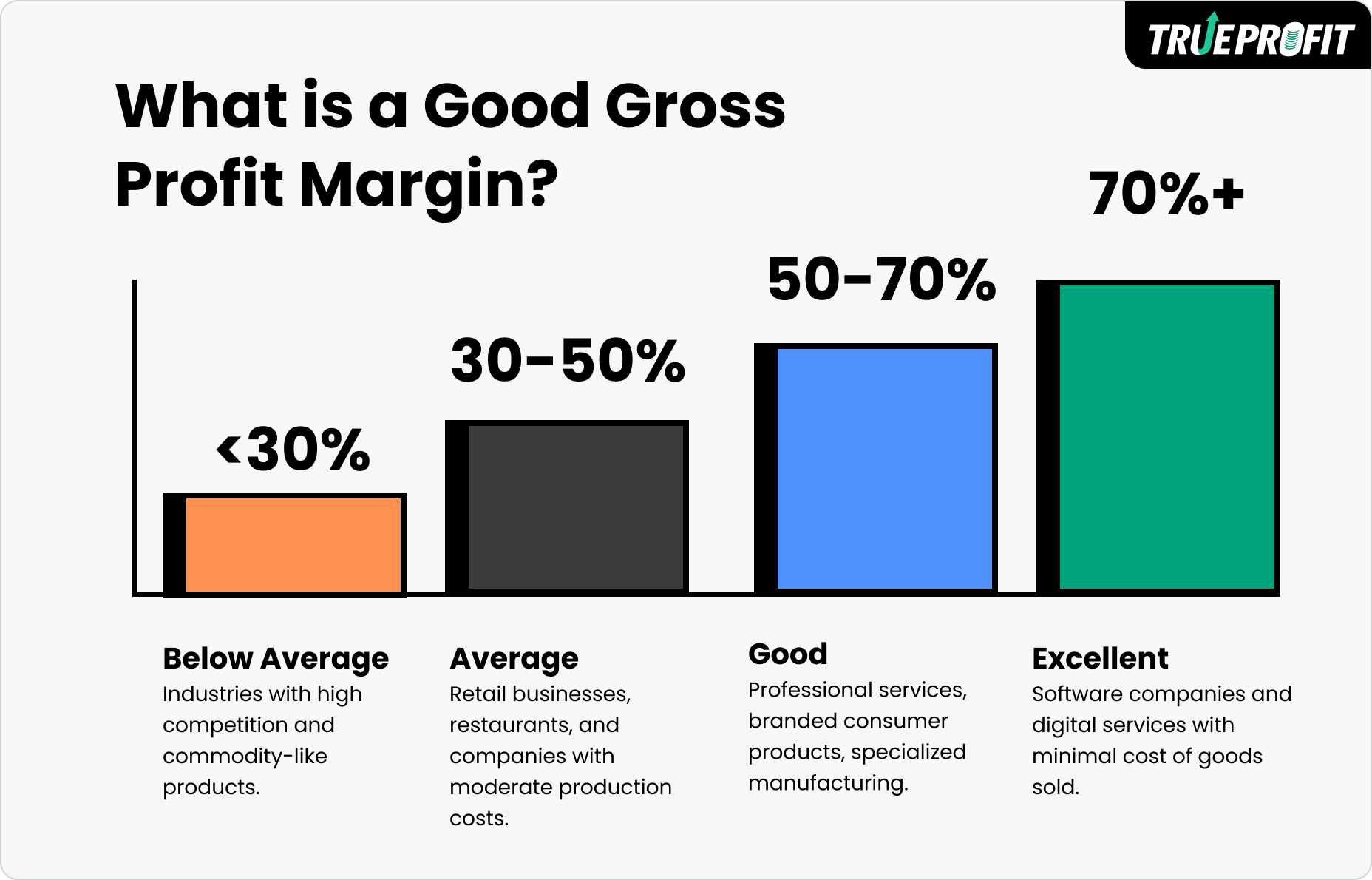What Is a Good Gross Profit Margin? [2025 Benchmarks]
![What Is a Good Gross Profit Margin? [2025 Benchmarks]](https://be.trueprofit.io/uploads/Gross-profit-margin.webp)
A good gross profit margin typically starts around 30%, with high-margin industries like software aiming for 70% or more, while others like grocery may settle for less.
Understanding what is a good gross profit margin is crucial for business owners and entrepreneurs looking to evaluate financial performance and make strategic decisions.
This comprehensive guide explores everything you need to know about gross profit margins, from industry benchmarks to calculation methods.
What is a Good Gross Profit Margin?
A good gross profit margin typically ranges between 50% to 70% for most businesses, though this varies significantly by industry and business model. What is considered a good gross profit margin depends on your industry, business size, and competitive landscape.
Here's a general framework for evaluating gross profit margins:
- Excellent (70%+): Software companies and digital services with minimal cost of goods sold.
- Good (50-70%): Professional services, branded consumer products, and specialized manufacturing.
- Average (30-50%): Retail businesses, restaurants, and companies with moderate production costs.
- Below Average (<30%): Industries with high competition and commodity-like products.
The gross profit margin good range varies dramatically across sectors, making industry-specific benchmarks more meaningful than universal standards.
Factors That Affect Gross Profit Margin
Several critical factors influence your gross profit margin:
1. Industry and Business Model
Your industry fundamentally shapes margin expectations. Software companies naturally enjoy higher margins than grocery stores due to differences in cost structure and scalability.
2. Competition and Market Position
Businesses with strong competitive advantages can command premium pricing, leading to higher gross profit margins. Highly competitive markets often face pricing pressure that compresses margins.
3. Product Mix and Pricing Strategy
Premium products typically carry higher margins than budget alternatives. A strategic mix of low and high-margin products can optimize overall profitability.
4. Operational Efficiency
Streamlined operations, efficient supply chain management, and optimized production processes directly impact your cost of goods sold, thereby affecting margins.
5. Technology and Automation
Investing in technology and automation can reduce labor costs and improve efficiency, positively impacting gross profit margins over time.
Gross Profit Benchmarks by Industry
Understanding typical gross profit margin by industry provides crucial context for evaluating business performance:
1. Technology and Software
- Software as a Service (SaaS): 70-90%
- Software Development: 60-80%
- Technology Consulting: 50-70%
2. Retail and E-commerce
- E-commerce: 40-60%
- Apparel Retail: 35-55%
- Electronics Retail: 15-25%
- Grocery Retail: 10-15%
Good profit margin for retail businesses varies widely based on product category, with luxury retailers achieving higher margins than discount retailers.
3. Manufacturing
- Specialized Manufacturing: 40-60%
- Automotive Parts: 25-35%
- Generic Manufacturing: 20-30%
4. Food and Beverage
- Restaurants: 60-70% (food cost only)
- Food Manufacturing: 20-40%
5. Professional Services
- Consulting: 70-85%
- Legal Services: 60-80%
- Accounting Services: 65-75%
Service businesses typically enjoy high margins due to low direct costs.
What is Gross Profit and How to Calculate It?
1. Gross profit definition
Gross profit represents the money remaining after subtracting the direct costs of producing goods or services (Cost of Goods Sold) from total revenue.
2. Gross profit formula:
Here's how you can calculate gross profit and gross profit margin:
- Gross Profit = Revenue - Cost of Goods Sold (COGS)
- Gross Profit Margin = (Gross Profit ÷ Revenue) × 100
For example, if your business has:
- Revenue: $500,000
- Cost of Goods Sold: $200,000
Then:
- Gross Profit = $500,000 - $200,000 = $300,000
- Gross Profit Margin = ($300,000 ÷ $500,000) × 100 = 60%
Why is Gross Profit Margin Important?
Gross profit margin is one of the most critical eCommerce metrics to monitor because:
- Gross profit margin is a key indicator of business profitability: It shows how much money a company keeps after covering the cost of goods sold (COGS).
- Helps optimize pricing strategy: Analyzing gross profit margin helps businesses set prices that maximize revenue while maintaining healthy Pnl.
- Reveals operational efficiency: Tracking gross margins over time highlights whether production or sourcing processes are cost-effective.
- Essential for competitive benchmarking: Comparing your gross profit margin to industry averages helps evaluate your market position and growth potential.
- Supports smarter financial planning and decision-making: Strong gross profit margins provide room to invest in marketing, hiring, product development, and business expansion.
- Early warning for financial issues: A declining gross profit margin may indicate rising costs, pricing pressure, or inefficiencies that need immediate attention.
Automate Gross Profit Margin Tracking with TrueProfit
Understanding what a good gross profit margin is, and how it varies by industry, is key to measuring profitability and making smarter business decisions.
By tracking your margins, optimizing pricing, and managing costs, you can build a more sustainable and scalable business.
If you're running a Shopify store, TrueProfit can help you automatically track your gross profit margin in real time, giving you clear, actionable insights to boost your bottom line.
Irene Le is the Content Manager at TrueProfit, specializing in crafting insightful, data-driven content to help eCommerce merchants scale profitably. With over 5 years of experience in content creation and growth strategy for the eCommerce industry, she is dedicated to producing high-value, actionable content that empowers merchants to make informed financial decisions.


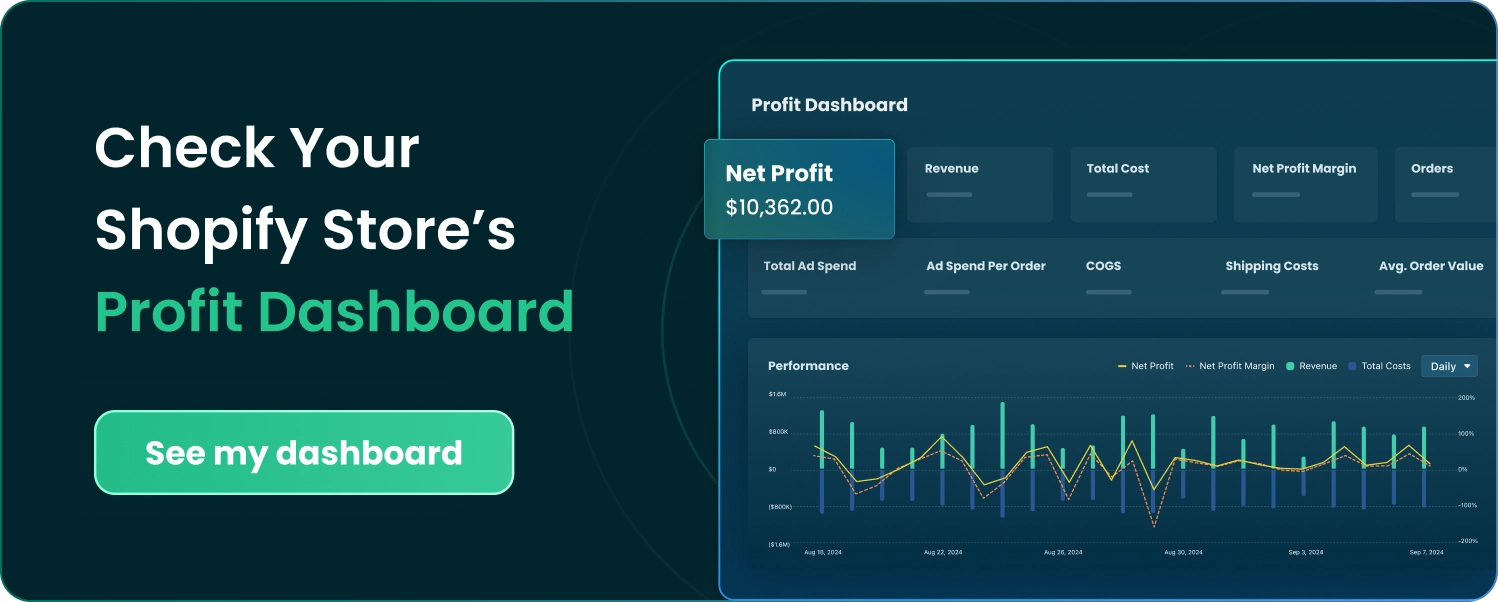


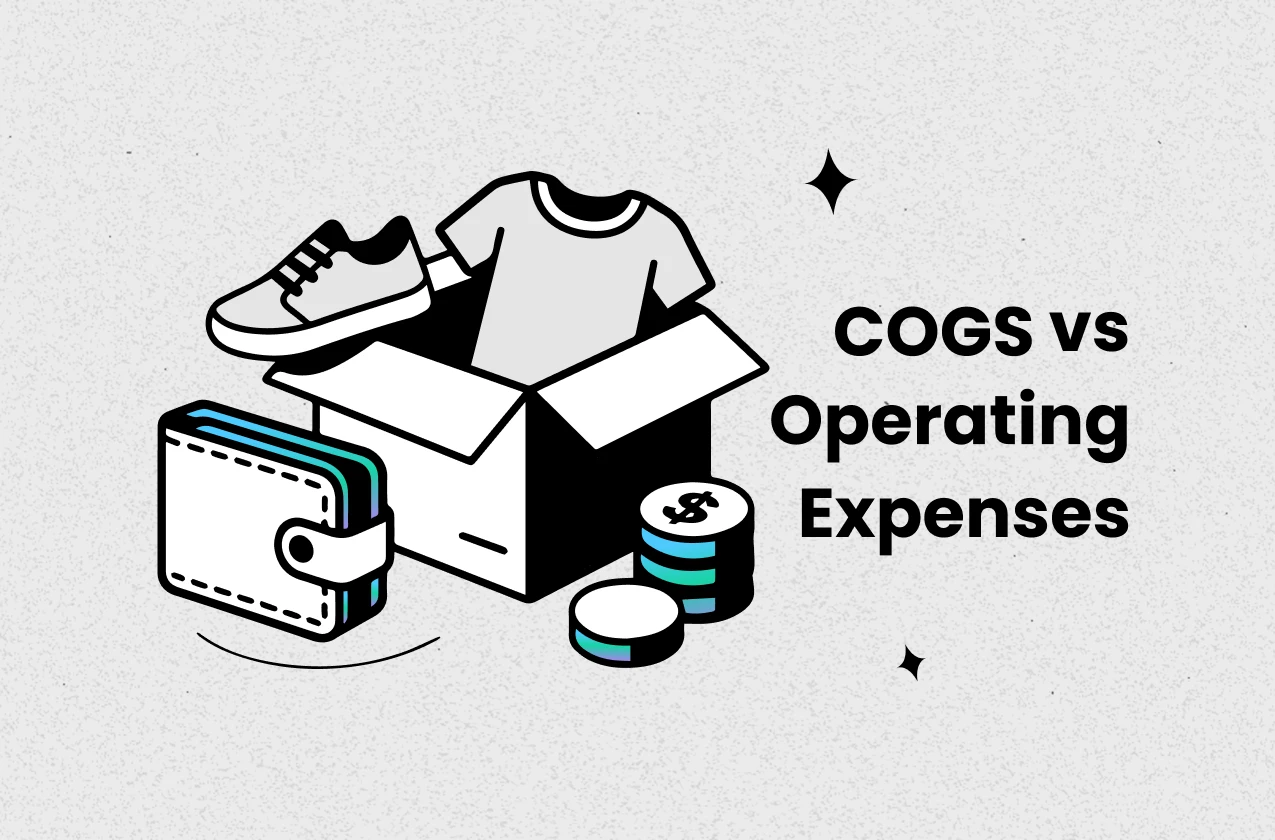
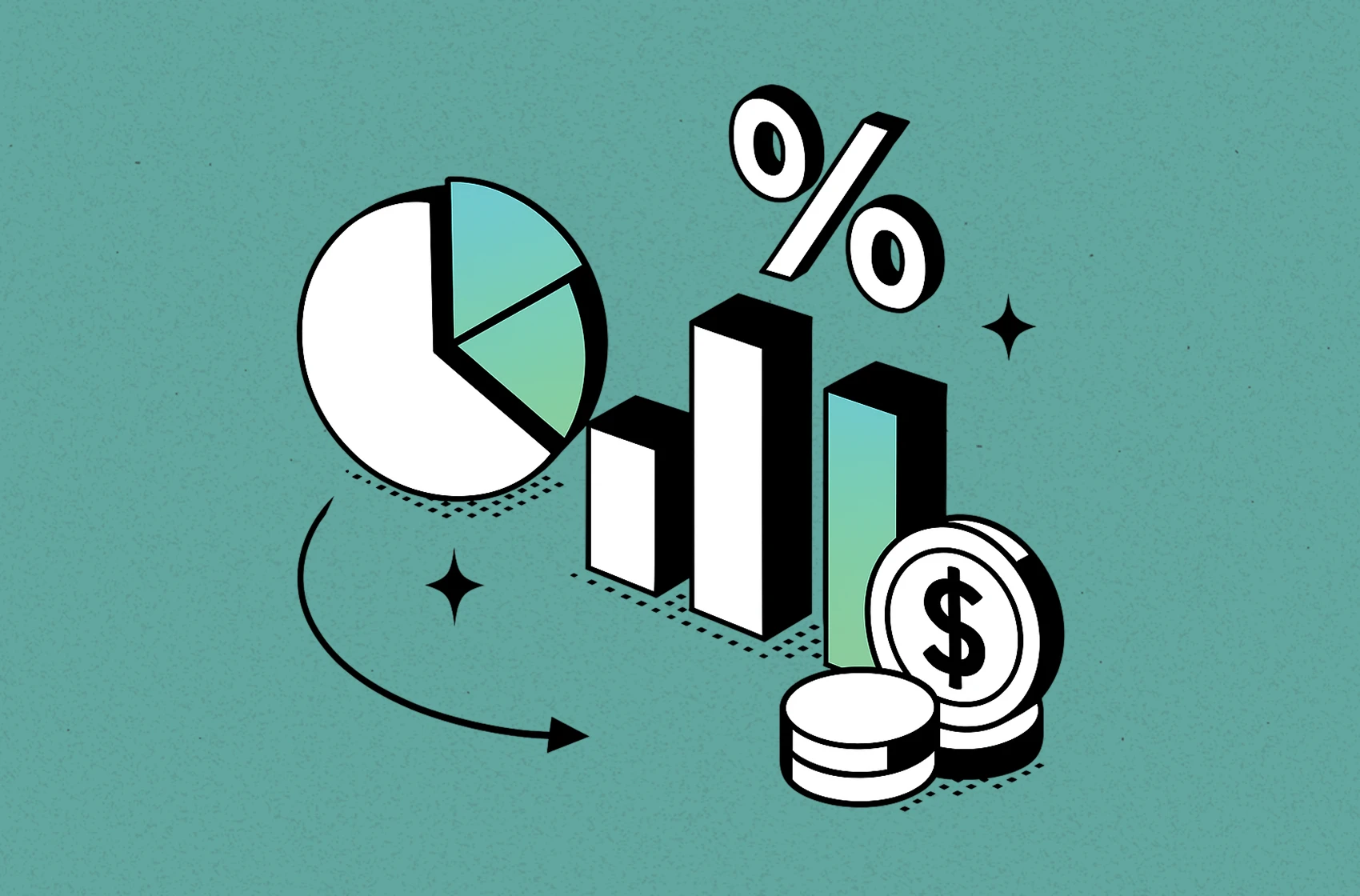
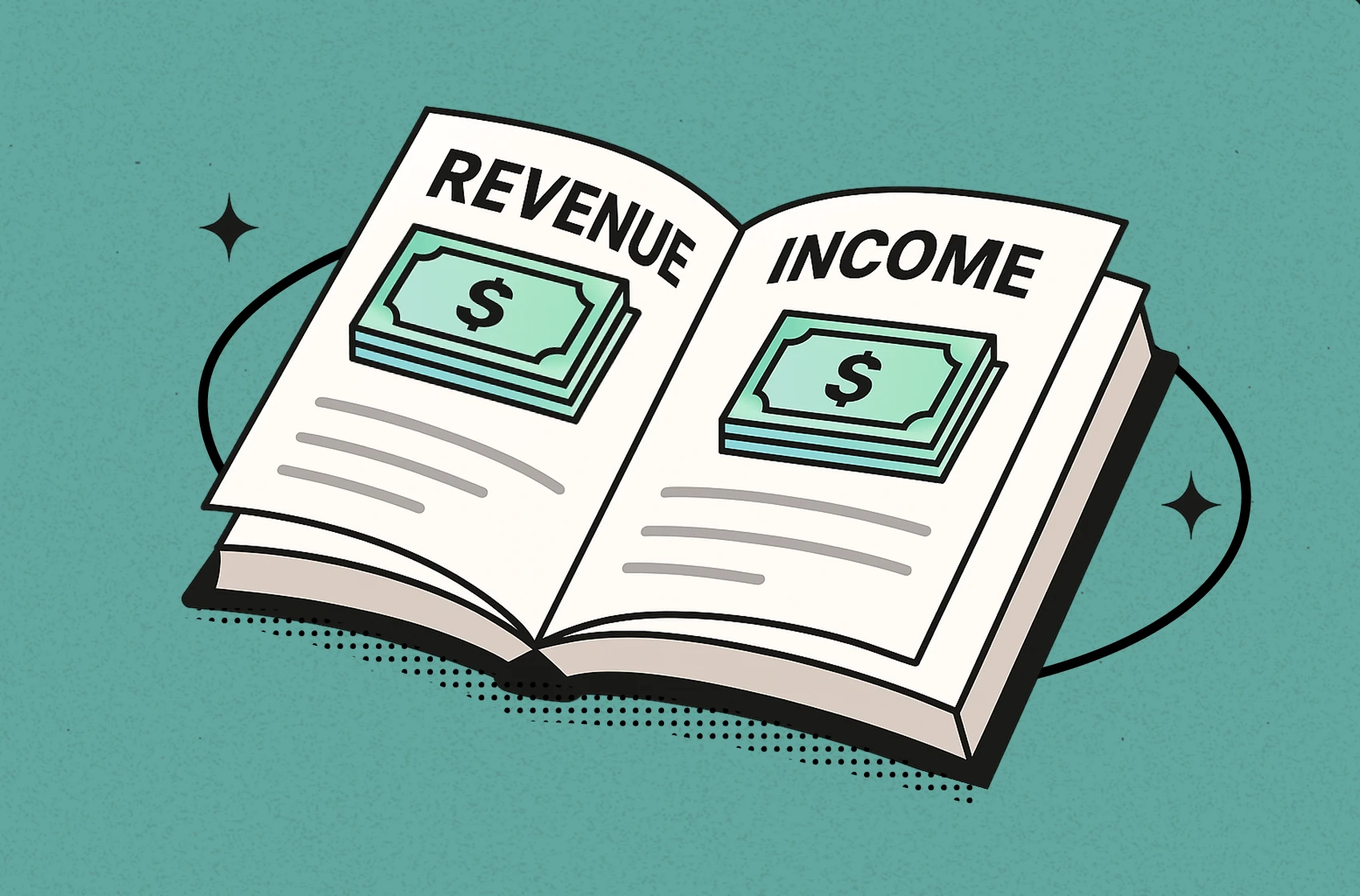
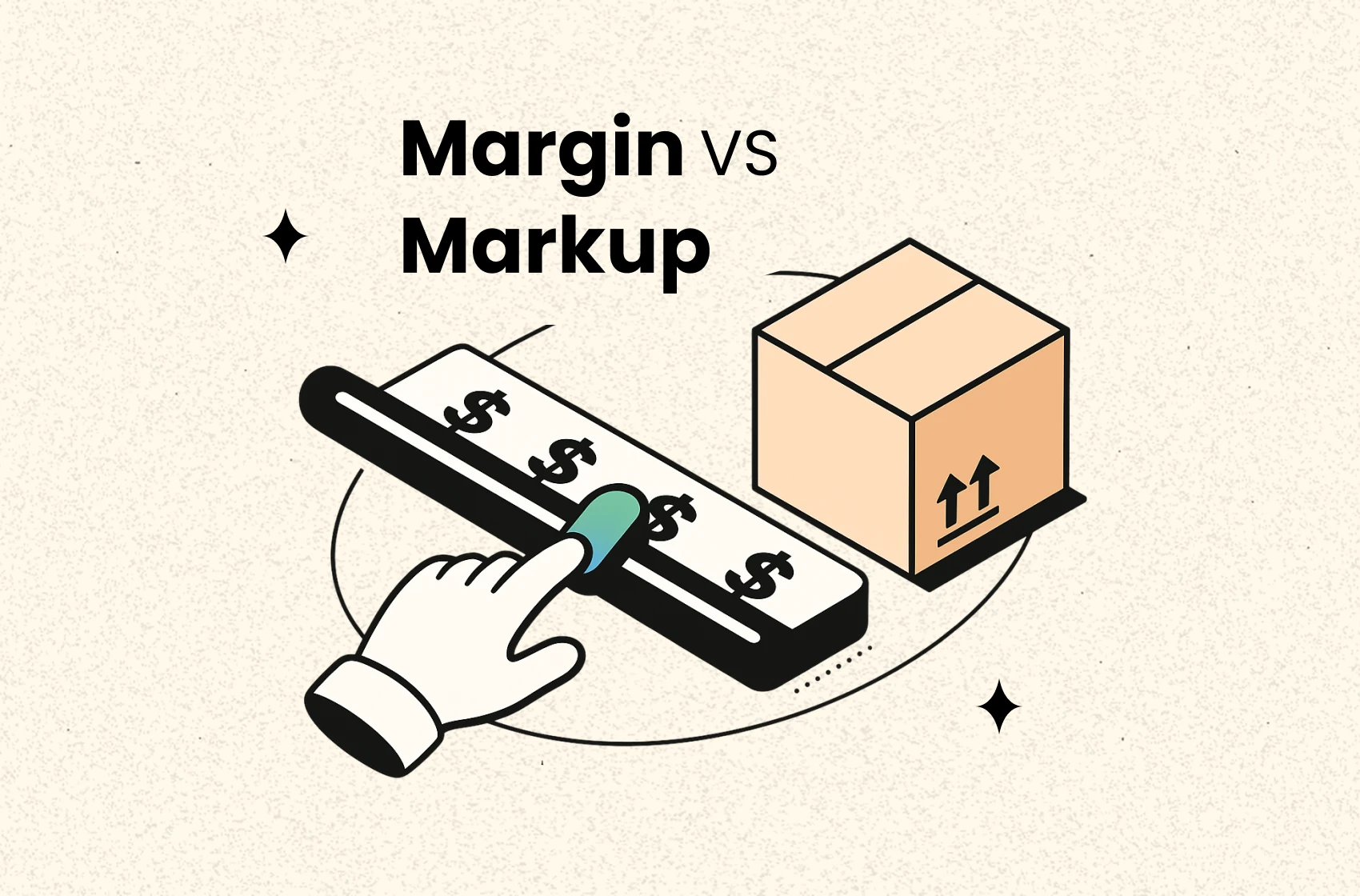

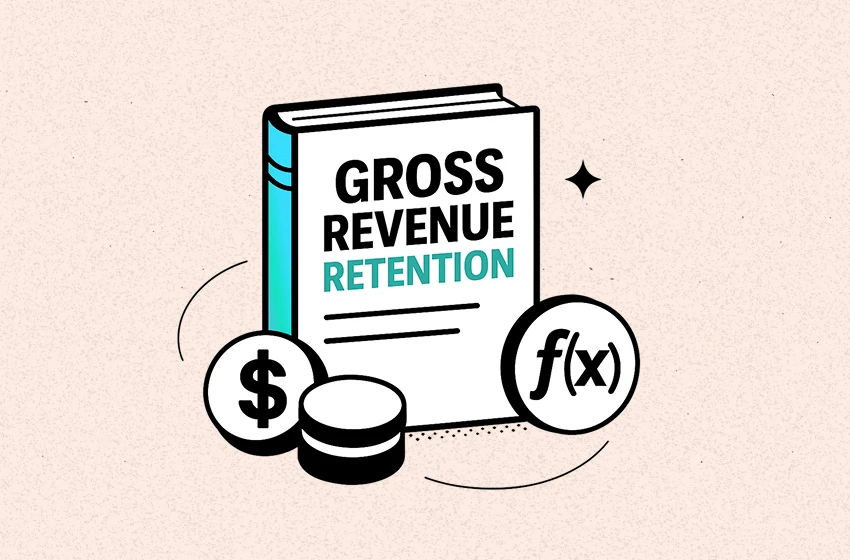
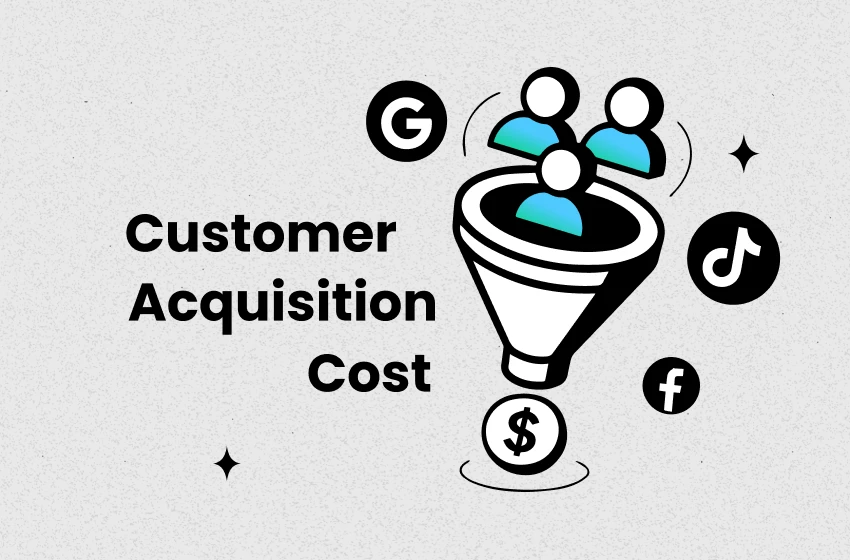
 Shopify profits
Shopify profits